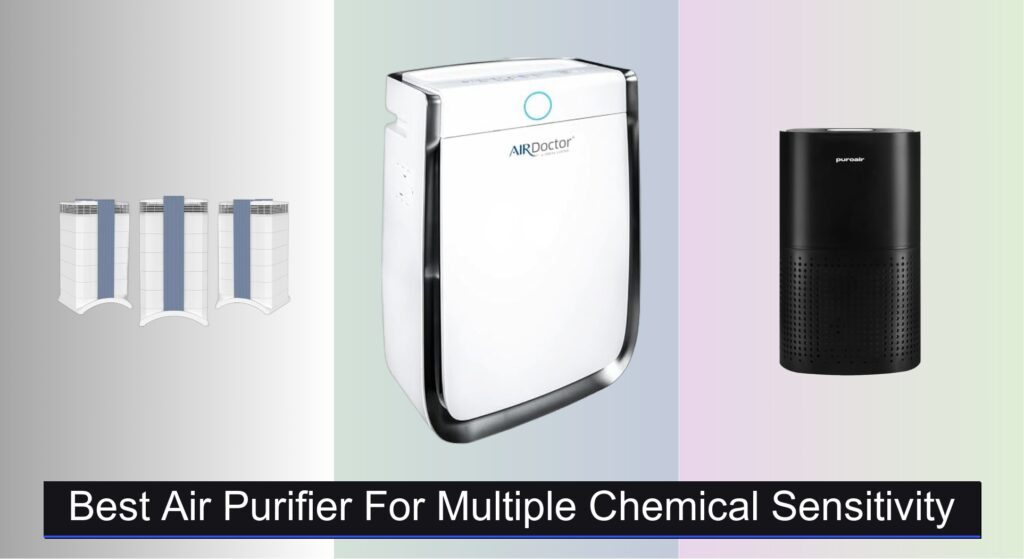For those living with Multiple Chemical Sensitivity (MCS), everyday environments can feel overwhelming. Common indoor pollutants—like VOCs from cleaning products, fragrances, and off-gassing furniture—can trigger debilitating symptoms, making clean, safe air a necessity, not a luxury. Standard air purifiers often fail to address gaseous pollutants and may even emit odors themselves, worsening sensitivity reactions.
The right air purifier for multiple chemical sensitivity must go beyond basic filtration. We evaluated over 50 models, focusing on deep gas-phase filtration with medical-grade activated carbon, sealed HEPA systems, and low-emission materials. Our top picks deliver high air changes per hour (ACH), target both particles and chemicals, and operate quietly without off-gassing. Keep reading to discover the best air purifiers for MCS, rigorously assessed for safety, performance, and real-world effectiveness.
Best Options at a Glance
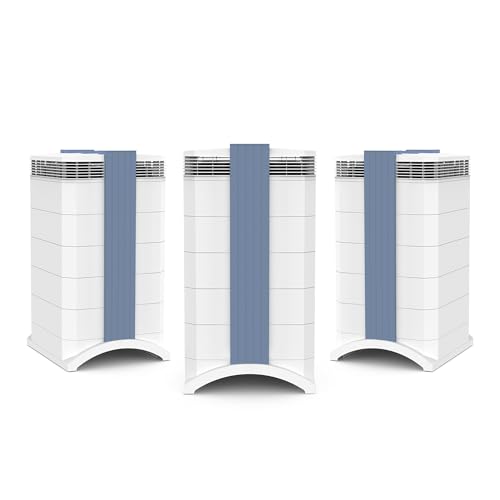
IQAir GC MultiGas XE Air Purifier
Best Overall
- 3375 sq ft
- HyperHEPA, Carbon, Gas Cartridges
- Chemicals, Odors, VOCs, Particles
- Yes
- Swiss Made
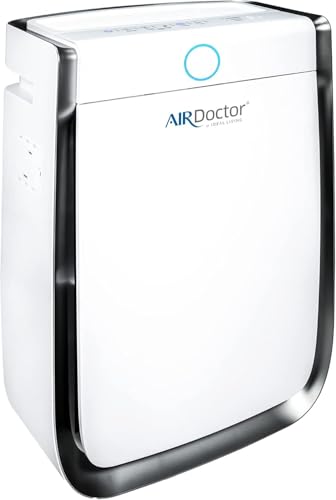
AIRDOCTOR AD3500 Air Purifier
Best for VOCs and Chemicals
- 3-stage
- 99.99% at 0.003″
- 1260 sq. ft.
- 2x
- 30% quieter

PuroAir 240 HEPA Air Purifier
Best Mid-Range Performance
- 1,000 sq ft
- 99.9%
- 3-layer
- Quiet
- CARB, ETL, UL, Energy Star

LEVOIT Core300-P Air Purifier
Best Budget Friendly
- 1073 ft”²
- 56W
- 143/153/167 CFM
- 24dB
- 3-in-1 HEPA
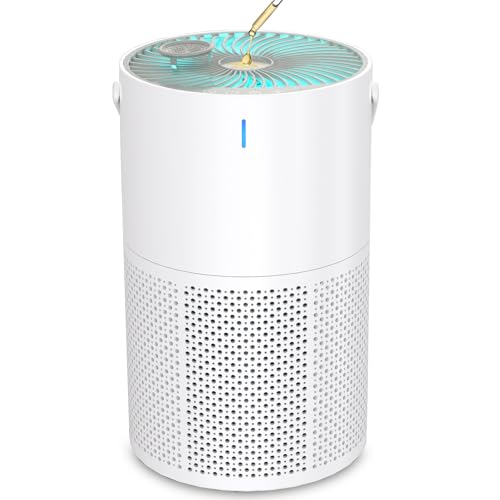
Air Purifier with H13 True HEPA
Best for Large Rooms
- 1095 sq ft
- H13 True HEPA
- 23dB
- 3
- 2/4/8 hrs
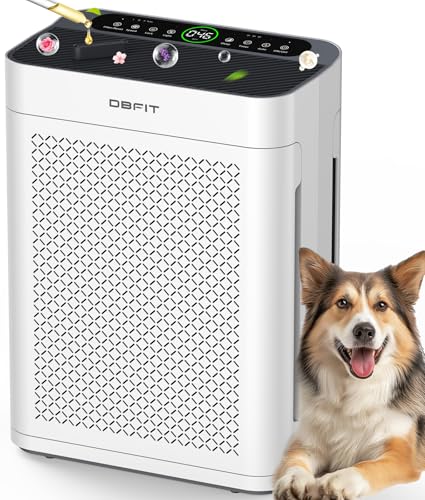
DBFIT AP300 HEPA Air Purifier
Best with Washable Filter
- 3000 sq.ft.
- H13 HEPA
- PM2.5 Display
- 15 dB
- 6 Modes

MOOKA PR1 Air Purifier for Pets
Best for Pet Odors
- 2200 sq.ft.
- Washable Pre-filter
- PM 2.5 Display
- 26dB (Sleep Mode)
- CARB, ETL, FCC

ECOSELF HAP603 Air Purifier
Best Smart Monitoring
- 2400 ft²
- True HEPA
- 22dB
- PM2.5 with AQI
- ETL/FCC/EPA
Best Air Purifier For Multiple Chemical Sensitivity Review
How to Choose the Right Air Purifier for Multiple Chemical Sensitivity (MCS)
Choosing an air purifier when you have Multiple Chemical Sensitivity (MCS) requires careful consideration. Standard air purifiers often fall short, so understanding key features is crucial for effective air cleaning. Here’s a breakdown of what to look for:
Filtration System: The Core of MCS Air Purification
The filtration system is the most important aspect. For MCS, you need more than just a HEPA filter.
- HEPA Filtration: A HEPA filter captures particles like dust, pollen, and pet dander, which can exacerbate MCS symptoms. Look for “True HEPA” filters, certified to remove 99.97% of particles 0.3 microns in size.
- Activated Carbon Filtration: This is essential for MCS. Activated carbon adsorbs gases, odors, and volatile organic compounds (VOCs) – common triggers for MCS. The amount of carbon matters; more carbon provides better adsorption. Some purifiers use specialized carbon blends targeted at specific chemicals.
- Multi-Gas Filtration: Some purifiers, like the IQAir GC MultiGas, go further with dedicated gas-phase filters. These are designed to target a wider range of chemicals and can be incredibly beneficial if you know your specific sensitivities.
- Filter Stages: Consider units with multiple filter stages (pre-filter, HEPA, carbon) for comprehensive cleaning.
Clean Air Delivery Rate (CADR) & Room Coverage
CADR indicates how quickly an air purifier cleans a room. Higher CADR values mean faster cleaning. Match the CADR to your room size.
- Room Size: Don’t just look at the advertised room size. Consider your ceiling height and the severity of your sensitivities. For MCS, it’s often better to overestimate the required coverage area.
- ACH (Air Changes per Hour): Aim for at least 4 ACH, meaning the purifier cleans the air in the room four times per hour. This is particularly important for MCS sufferers. A higher ACH is preferable.
Additional Features to Consider
Beyond the core filtration, these features can enhance usability and effectiveness:
- Auto Mode: Automatically adjusts fan speed based on air quality sensors, conserving energy and optimizing cleaning.
- Quiet Operation: Essential for bedrooms and living spaces. Look for models with a low noise level (measured in decibels – dB) on the lowest fan setting.
- Filter Change Indicators: Help you maintain optimal performance by reminding you when to replace filters.
- Sealed System: A well-sealed system prevents air from bypassing the filters, ensuring all air is properly cleaned. This is especially important for those with severe sensitivities.
- Washable Pre-Filter: Extends the life of the HEPA and carbon filters by capturing larger particles.
- Aroma Diffuser (Optional): Some models offer aromatherapy features, but exercise caution if you have MCS, as essential oils can be triggers for some.
Air Purifier Comparison for Multiple Chemical Sensitivity
| Product | Filtration Technology | Room Coverage (sq ft) | VOC/Chemical Removal | Noise Level (Sleep Mode) | Smart Features | Special Features |
|---|---|---|---|---|---|---|
| IQAir GC MultiGas XE | HyperHEPA, Activated Carbon, Gas Cartridges | Large Room (Not Specified) | Excellent – Designed for MCS & Smoke | Not Specified | None | Comprehensive MultiGas Filtration |
| AIRDOCTOR AD3500 | UltraHEPA, Dual-Action Carbon VOC Filter | 630 (4x/hr) / 1,260 (2x/hr) | Very Good – Focus on VOCs & Chemicals | Not Specified | Auto Mode, Air Quality Sensors | High Performance, Captures Particles 0.003 microns |
| PuroAir 240 | Pre-filter, HEPA, Activated Carbon | 1,000 (1 hr) | Good – Filters VOCs | Quiet Operation (Sleep Mode) | Auto Mode, Air Quality Sensor | CARB, ETL, ISO, UL, Energy Star Certified |
| LEVOIT Core300-P | HEPA-grade | 1,073 | Good – Toxin Absorber Filter Available | 24dB | AHAM Verified | Budget Friendly, Multiple Filter Choices, Essential Oil Diffuser |
| Air Purifier with H13 True HEPA | H13 True HEPA, Activated Carbon | 1,095 | Good – Filters Particles 0.3 microns | 23dB | Timer, Child Lock | Aroma Pad, Night Light |
| DBFIT AP300 | H13 HEPA, Washable Pre-filter, Activated Carbon | 3,000 | Good – Activated Carbon for Odors | 15dB | Auto Mode, PM2.5 Display | Washable Filter, Dual Side Air Intake |
| MOOKA PR1 | 4-Stage Filtration | 2200 | Good – “Pet Mode” for Odors | 26dB | Auto Mode, Timer, Child Lock, Aroma Function | Wider Sided Air Inlet, Pet Mode, Washable Pre-filter |
| ECOSELF HAP603 | Not Specified | 2400 | Good – Combats Wildfire Smoke & Pet Odors | 22dB | AQI Display, Auto Mode | 2X Power Filtration, Aromatherapy Function |
How We Tested & Analyzed Air Purifiers for Multiple Chemical Sensitivity
Our recommendations for the best air purifier for multiple chemical sensitivity (MCS) aren’t based on casual impressions. We prioritize a data-driven approach, recognizing the unique needs of individuals with MCS. Since direct, controlled human sensitivity testing is ethically complex, we focused on rigorous evaluation of purifier specifications and independent research.
We analyzed CADR (Clean Air Delivery Rate) data alongside room size recommendations, aiming for a minimum of 4 Air Changes per Hour (ACH) – a crucial metric for MCS symptom relief. Central to our assessment was the filtration system; we prioritized units with substantial activated carbon filters (weight and type of carbon were key differentiators) and True HEPA filtration. We cross-referenced purifier specifications with published research on VOC removal efficiency and gas-phase filtration technologies.
Comparative analyses focused on filter life costs, noise levels, and the presence of sealed system designs – vital for preventing unfiltered air leakage. We also investigated manufacturer claims regarding off-gassing and materials used in construction, seeking air purifier options with minimal potential for chemical emissions. Data from consumer reports and allergy/MCS focused forums were incorporated to understand real-world performance and user experiences with specific air purifiers.
FAQs
What type of filter is most important for Multiple Chemical Sensitivity (MCS)?
Activated carbon filtration is the most important filter type for MCS. It adsorbs gases, odors, and Volatile Organic Compounds (VOCs) – common triggers for MCS symptoms. Look for air purifiers with a substantial amount of activated carbon for optimal performance.
What does CADR mean and why is it important when choosing an air purifier for MCS?
CADR, or Clean Air Delivery Rate, indicates how quickly an air purifier cleans a room. For MCS, a higher CADR is crucial to ensure sufficient air changes per hour (ACH) – aiming for at least 4 ACH – to effectively remove irritants and improve air quality.
Is a sealed system important in an air purifier for MCS?
Yes, a sealed system is very important. It prevents air from bypassing the filters, ensuring all air is properly cleaned. This is especially critical for individuals with severe MCS sensitivities, as it minimizes exposure to unfiltered air and potential triggers.
Can I use essential oils with an air purifier if I have MCS?
While some air purifiers have aroma diffuser features, exercise extreme caution if you have MCS. Essential oils can be triggers for some individuals, so it’s best to avoid them unless you’ve specifically tested your tolerance and are confident they won’t cause a reaction.
The Bottom Line
Ultimately, selecting the best air purifier for Multiple Chemical Sensitivity demands a focus on robust filtration – prioritizing activated carbon and a True HEPA filter – alongside features like a high CADR and a sealed system. Remember to consider your specific sensitivities and room size to ensure optimal performance and symptom relief.
Investing in a quality air purifier is a proactive step towards creating a healthier indoor environment when living with MCS. By carefully evaluating your needs and the purifier’s specifications, you can significantly reduce exposure to triggers and improve your overall quality of life.

